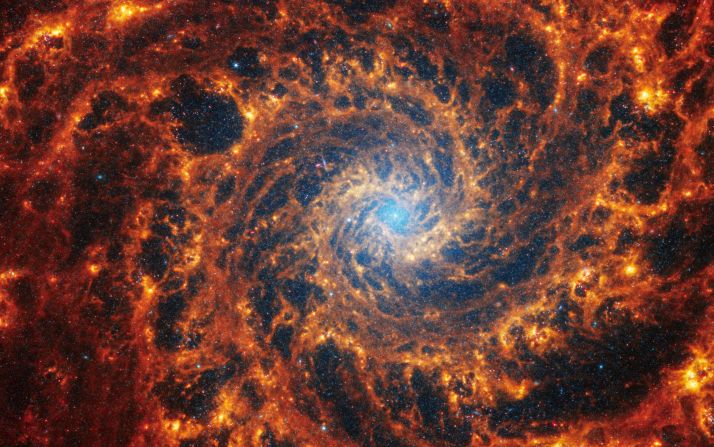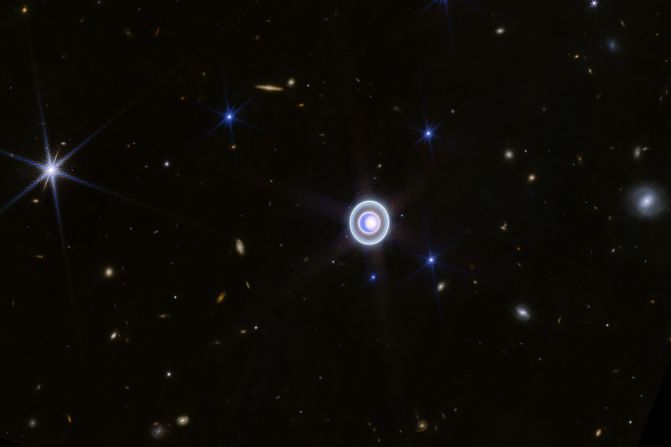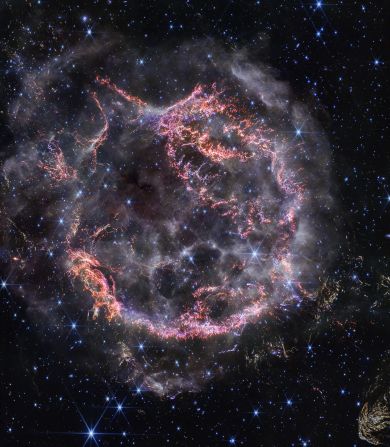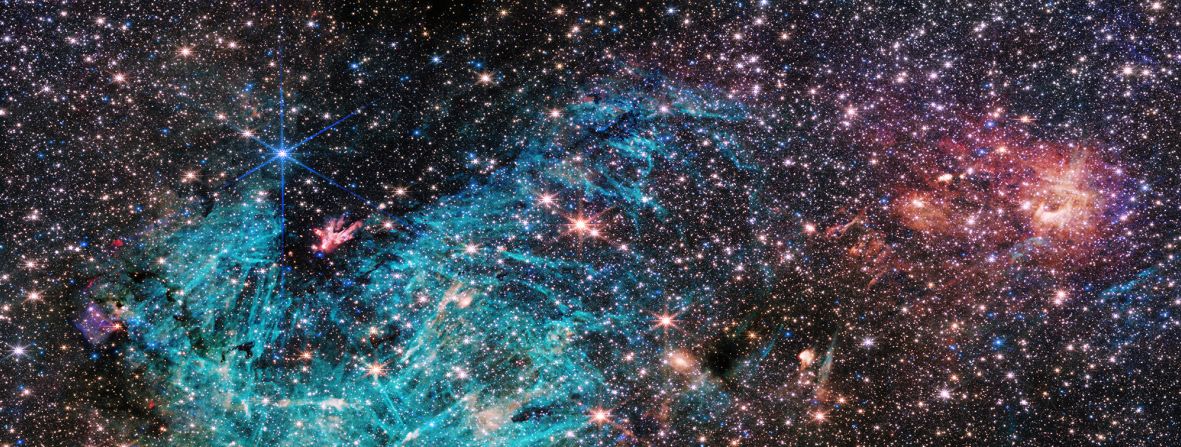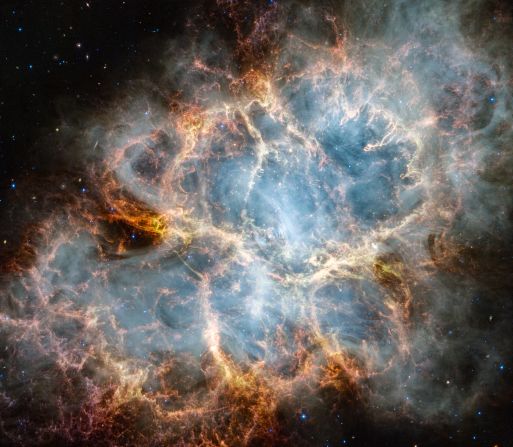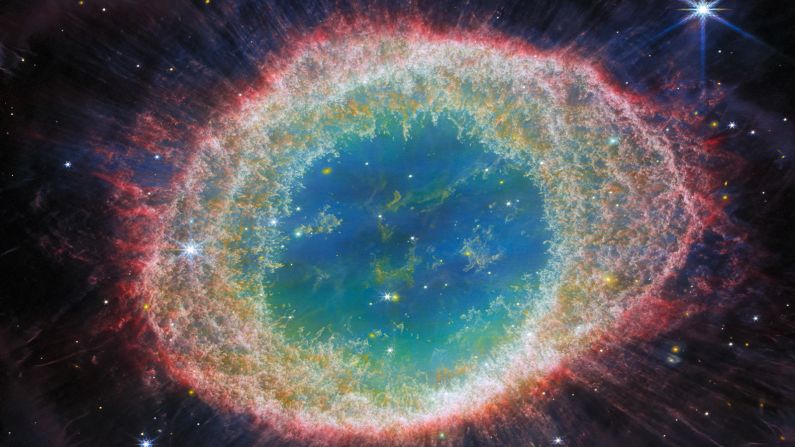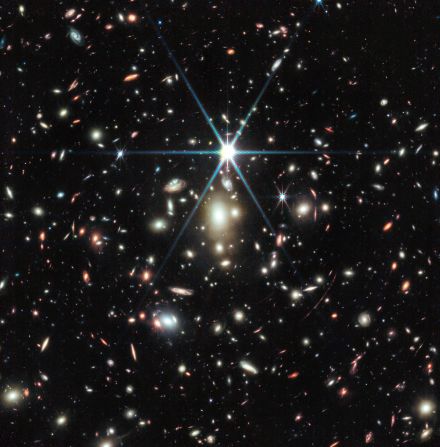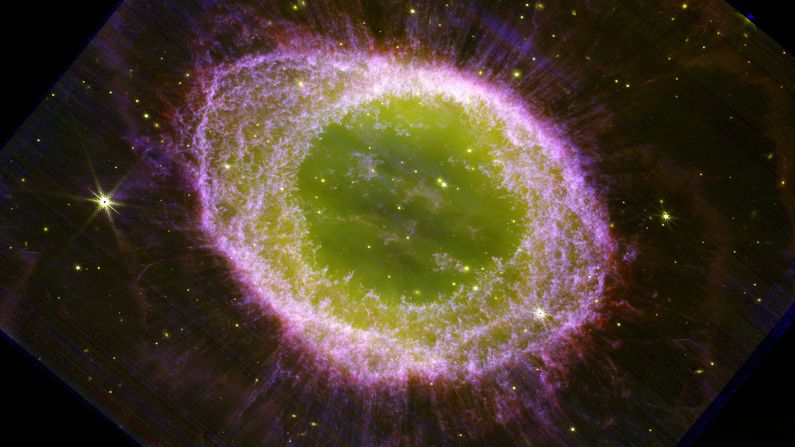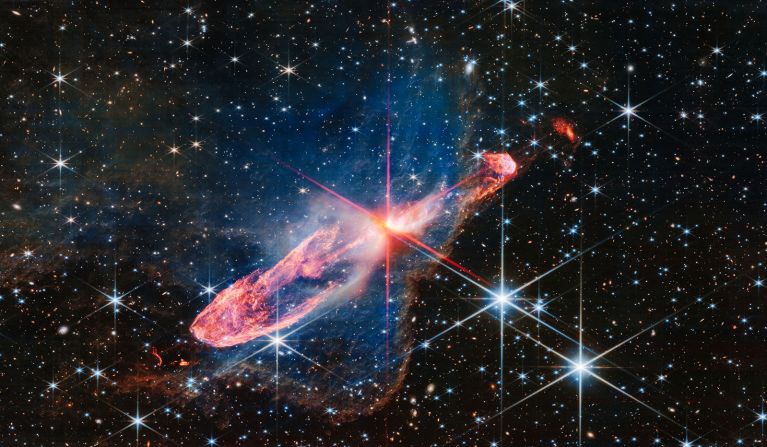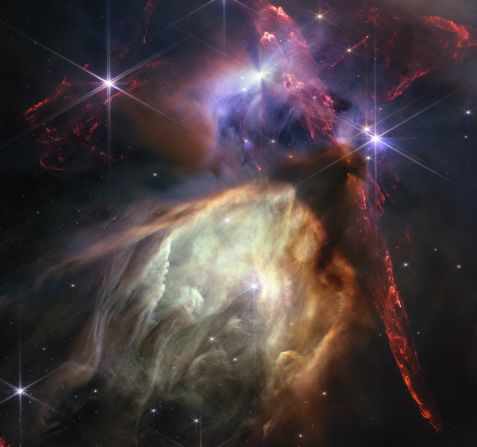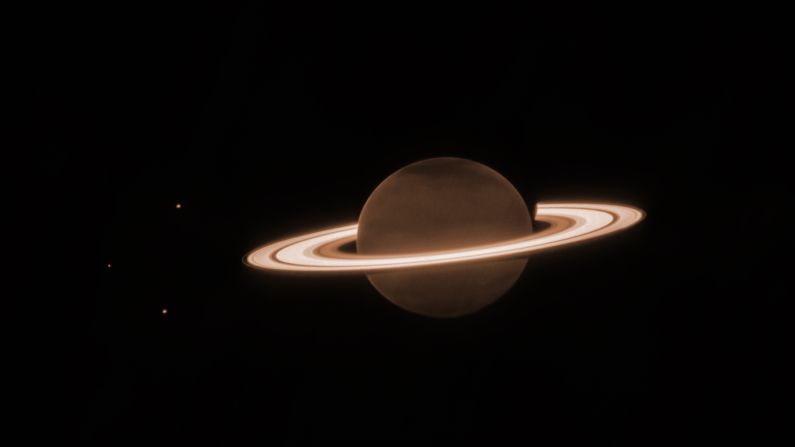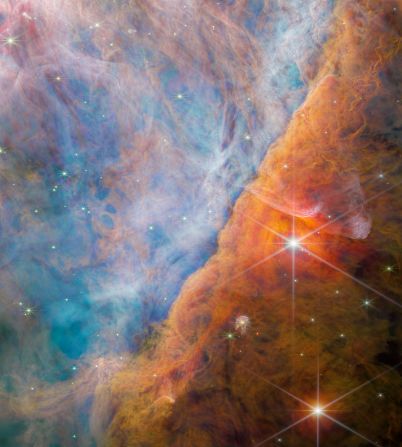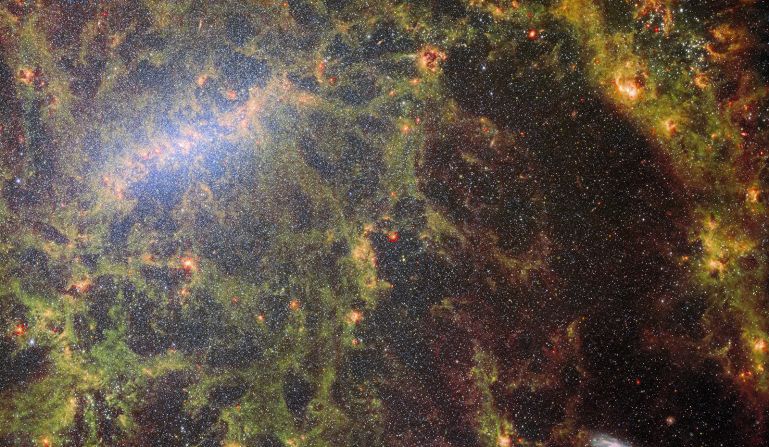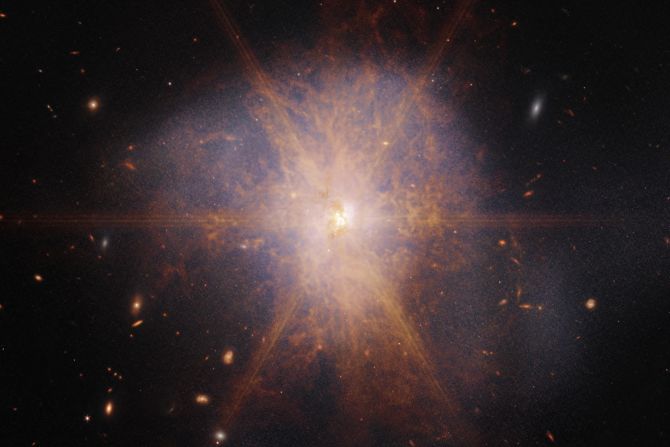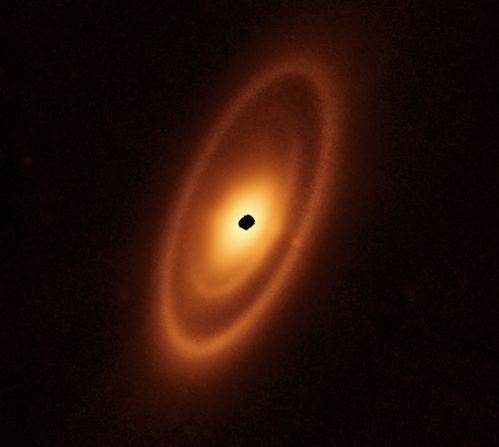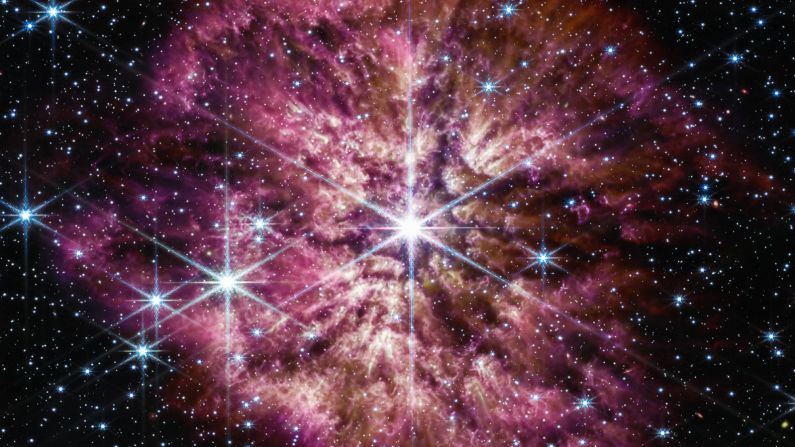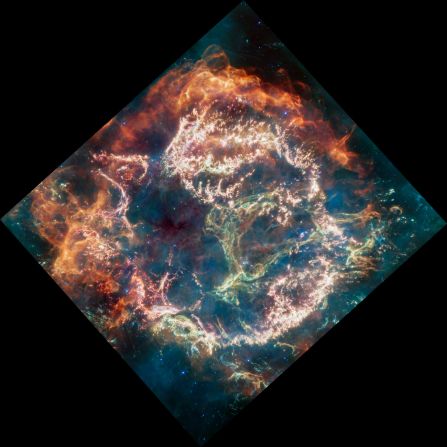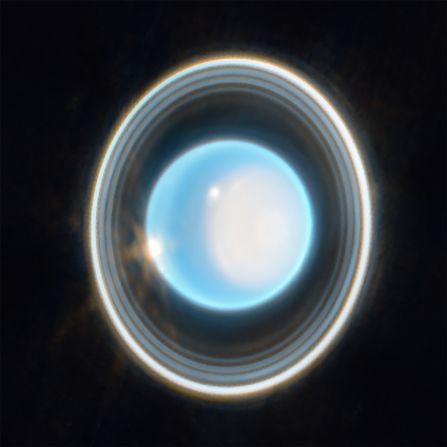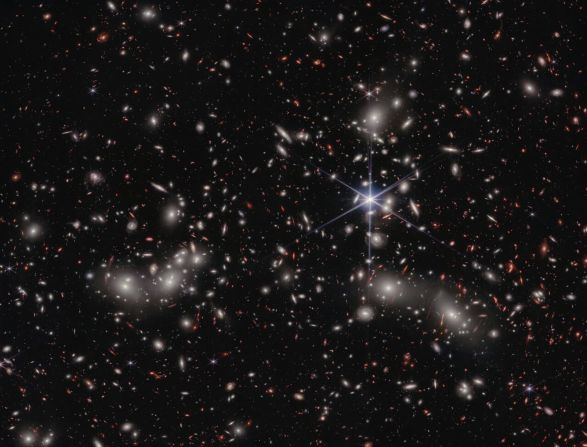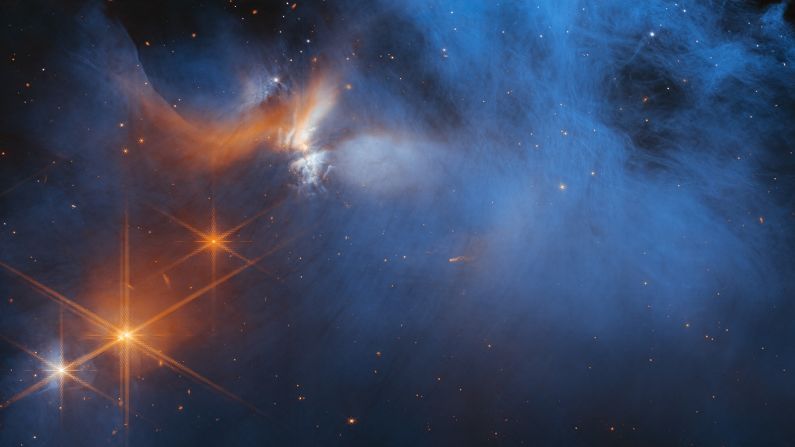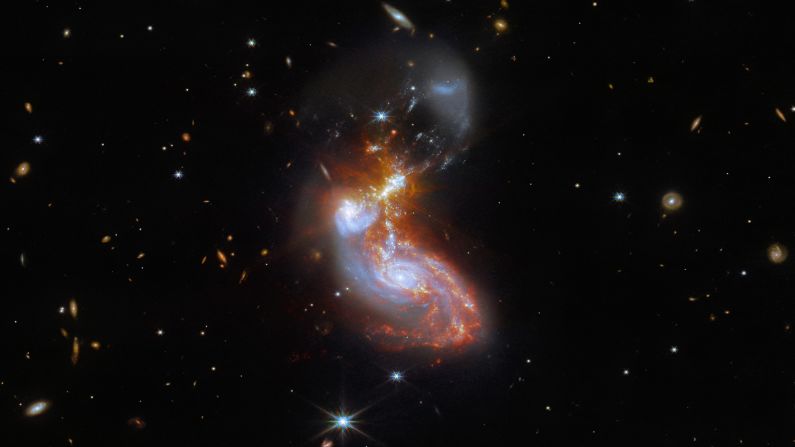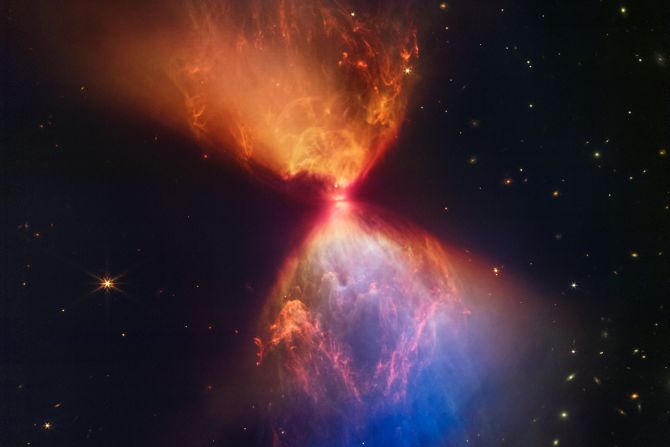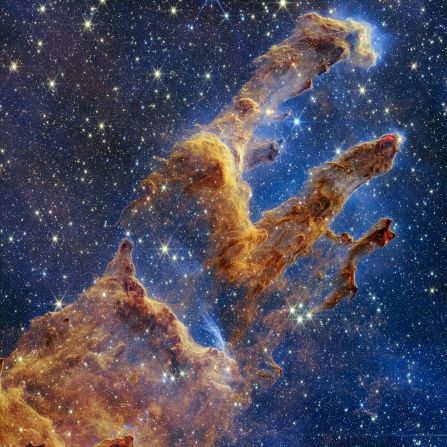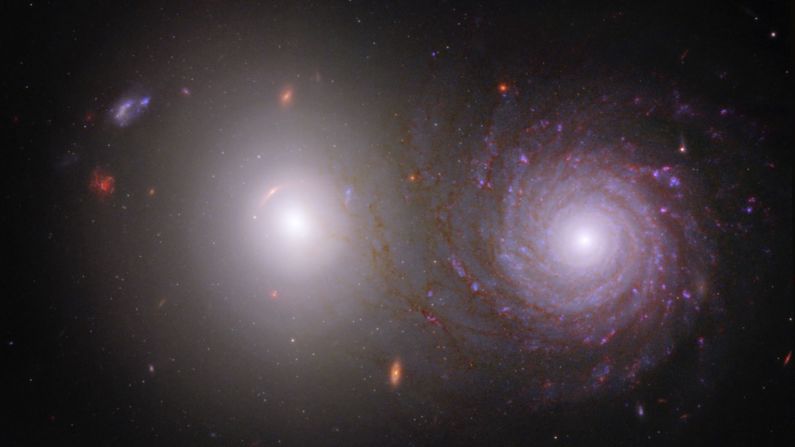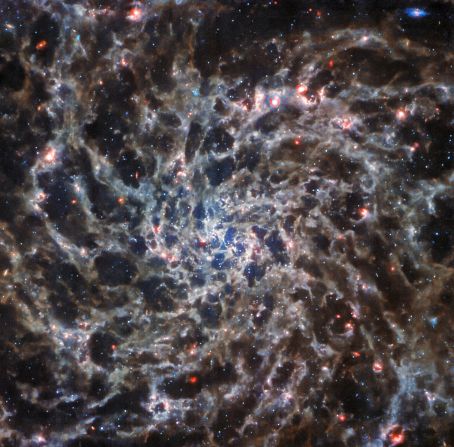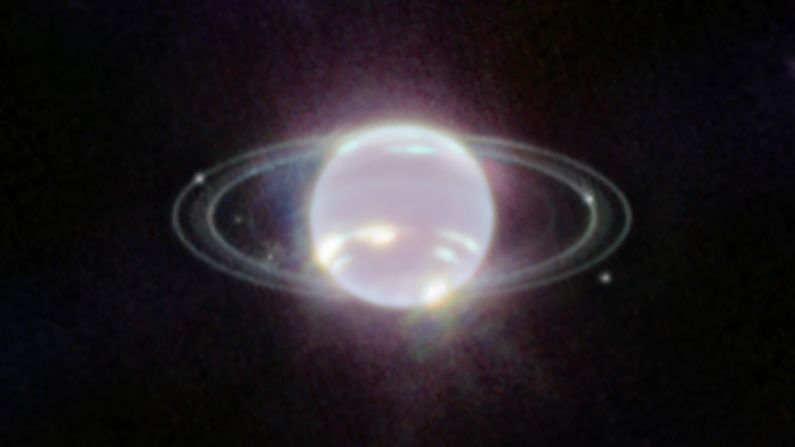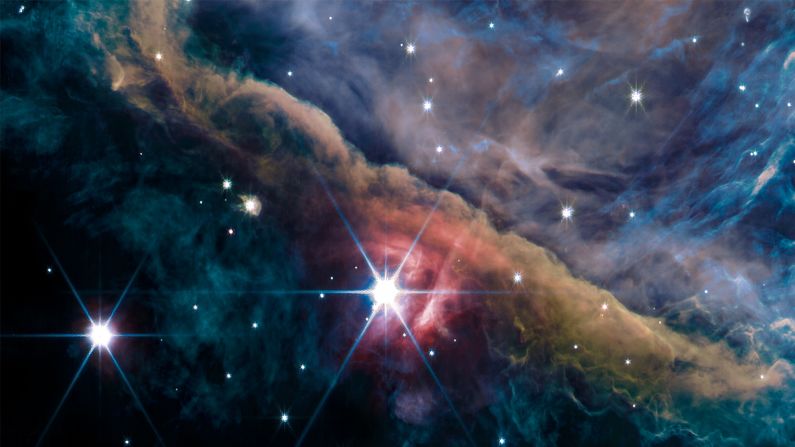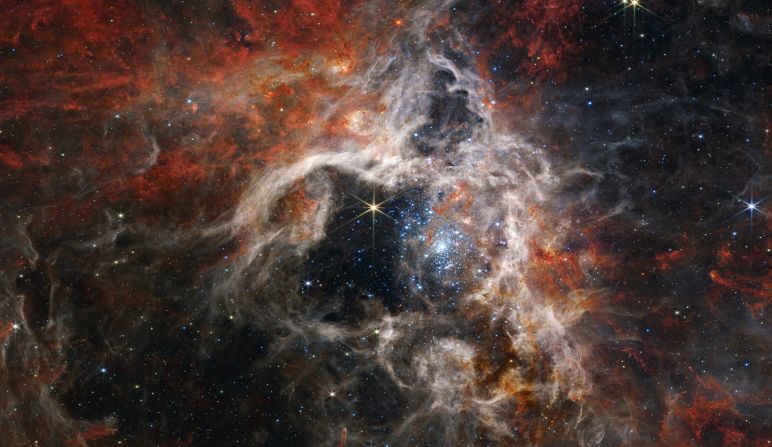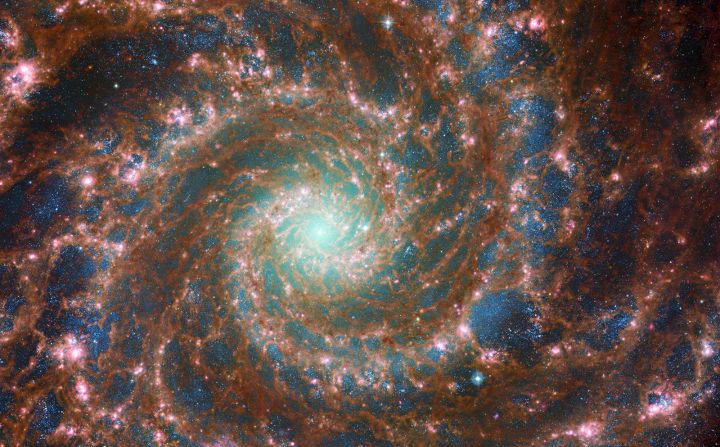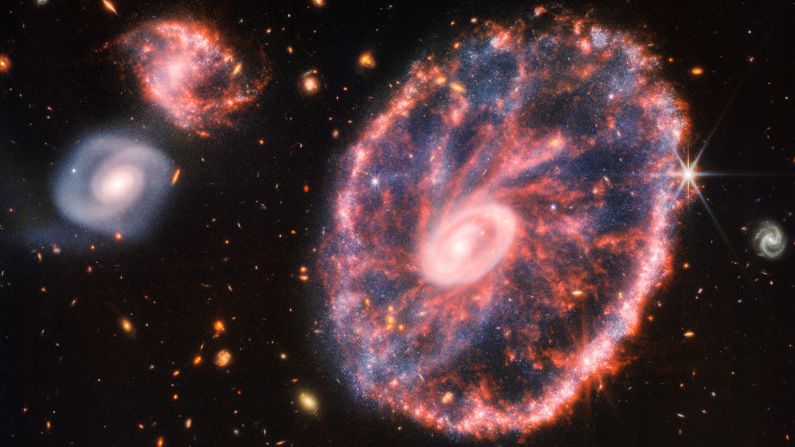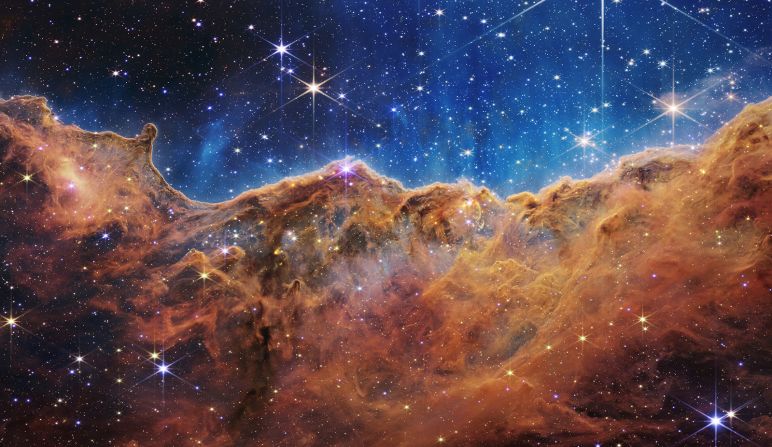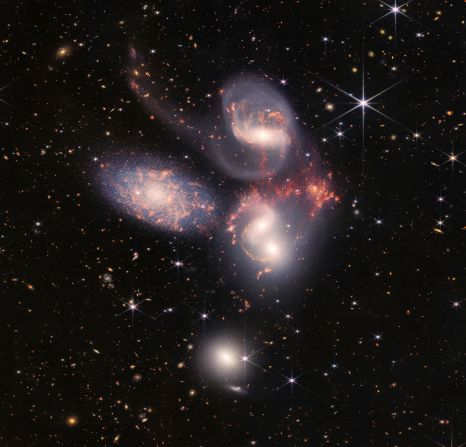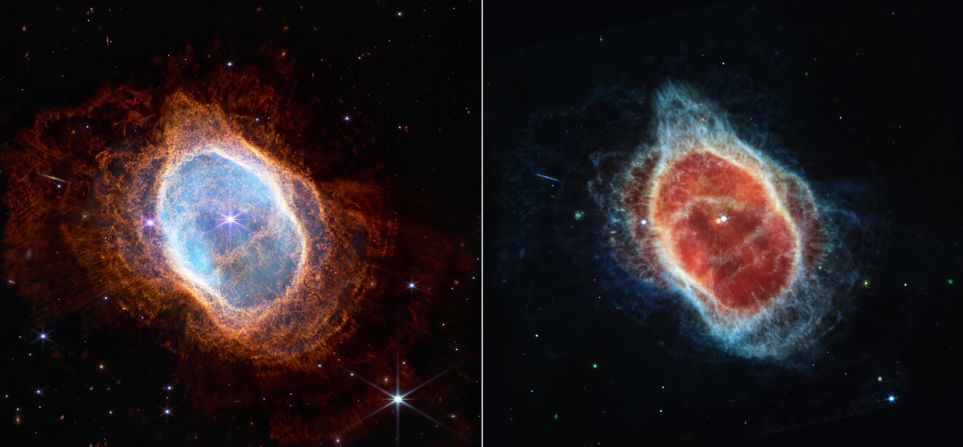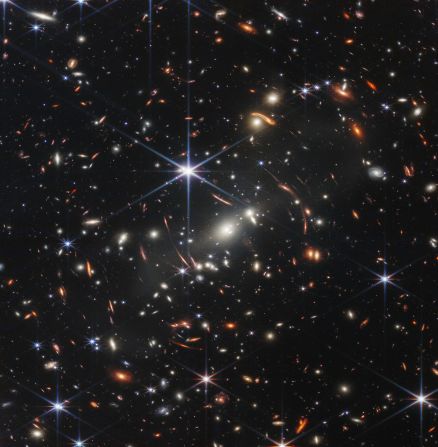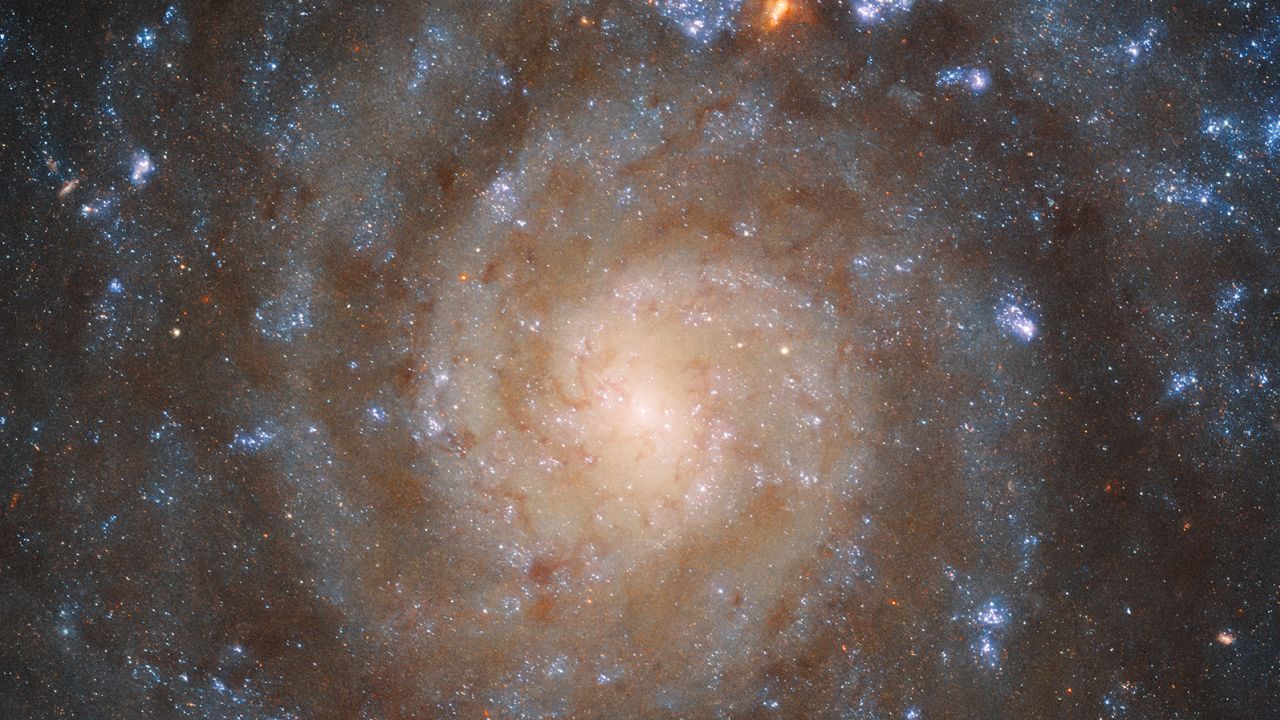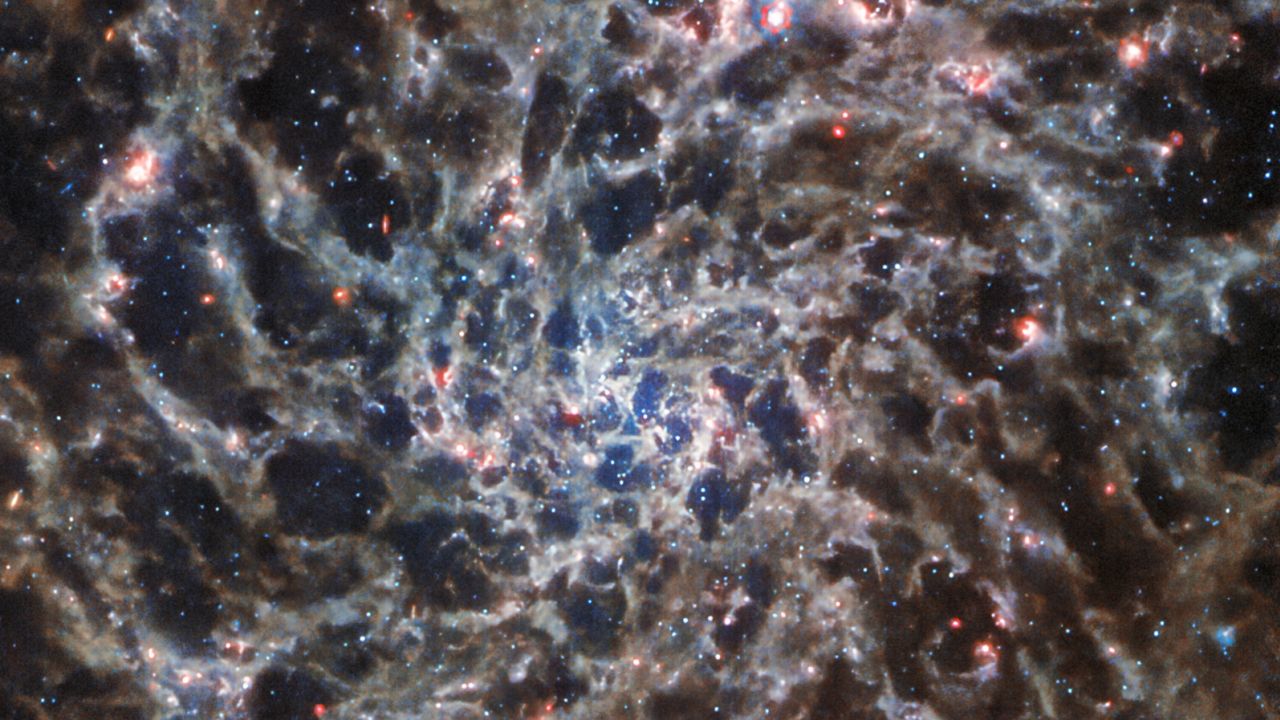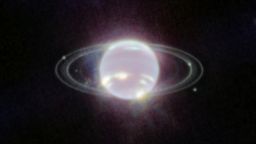Sign up for CNN’s Wonder Theory science newsletter. Explore the universe with news on fascinating discoveries, scientific advancements and more.
A dazzling spiral galaxy located 29 million light-years from Earth appears in “unprecedented detail” in a new image released by NASA’s James Webb Space Telescope.
The “bones” of the galaxy, typically obscured from view by dust, are on full display.
The galaxy, named IC 5332, stretches about 66,000 light-years wide, making it about one-third the size of our home galaxy, the Milky Way.
IC 5332 is “notable for being almost perfectly face-on with respect to Earth, allowing us to admire the symmetrical sweep of its spiral arms,” according to a press release from the European Space Agency.
To capture the image, the Webb telescope used its Mid-InfraRed Instrument, or MIRI, one of the observatory’s four powerful tools to investigate the cosmos, according to the release.
MIRI is the only Webb instrument that is sensitive to light on mid-infrared wavelengths, a type of wavelength that can only be observed by telescopes outside of Earth’s atmosphere. (Infrared is the term scientists use to refer to light that has wavelengths longer than humans can detect with the naked eye.)
The Hubble Space Telescope previously observed the galaxy in ultraviolet and visible light using its Wide Field Camera 3.
“The Hubble image shows dark regions that seem to separate the spiral arms, whereas the Webb image shows more of a continual tangle of structures that echo the spiral arms’ shape,” according to the release. The images reveal different stars, depending on the detectable wavelengths of each telescope.
The difference in a side-by-side comparison of the images is due to the galaxy’s dusty regions. Ultraviolet and visible light can be scattered by interstellar dust, so the dust-heavy regions appear darker in Hubble’s view.
Webb’s ability to detect infrared light can penetrate interstellar dust. Together, these two views of the same galaxy reveal more about its composition and structure.
To function, all of Webb’s instruments must be kept extremely cold, because even slightly warm objects can emit their own infrared light and distort an image. The MIRI instrument is kept the coldest at minus 447 degrees Fahrenheit (minus 266 degrees Celsius) – only 7 degrees Celsius warmer than absolute zero. (Absolute zero is the lowest possible temperature on the thermodynamic scale).
Meanwhile, the Webb team is assessing an issue with one of MIRI’s four observing modes.
“On Aug. 24, a mechanism that supports one of these modes, known as medium-resolution spectroscopy (MRS), exhibited what appears to be increased friction during setup for a science observation. This mechanism is a grating wheel that allows scientists to select between short, medium, and longer wavelengths when making observations using the MRS mode,” according to an update from the Webb blog run by NASA.
Observations in this mode have been paused by the Webb team as they determine a path forward. Otherwise, Webb, its instruments and MIRI’s other three observing modes are fine.
Webb is operated by NASA, ESA and the Canadian Space Agency. The $10 billion space observatory, launched last December, has enough fuel to keep taking fantastic images for about 20 years.
Compared with other telescopes, the space observatory’s massive mirror can see faint, distant galaxies and has the potential to enhance our understanding of the origins of the universe.
Some of Webb’s first images, released in July, have highlighted the observatory’s capabilities to reveal previously unseen aspects of the cosmos, like star birth shrouded in dust.
However, it’s also using its stable and precise image quality to illuminate our own solar system, and so far has taken images of Mars, Jupiter and Neptune.
CNN’s Katie Hunt contributed to this story.




